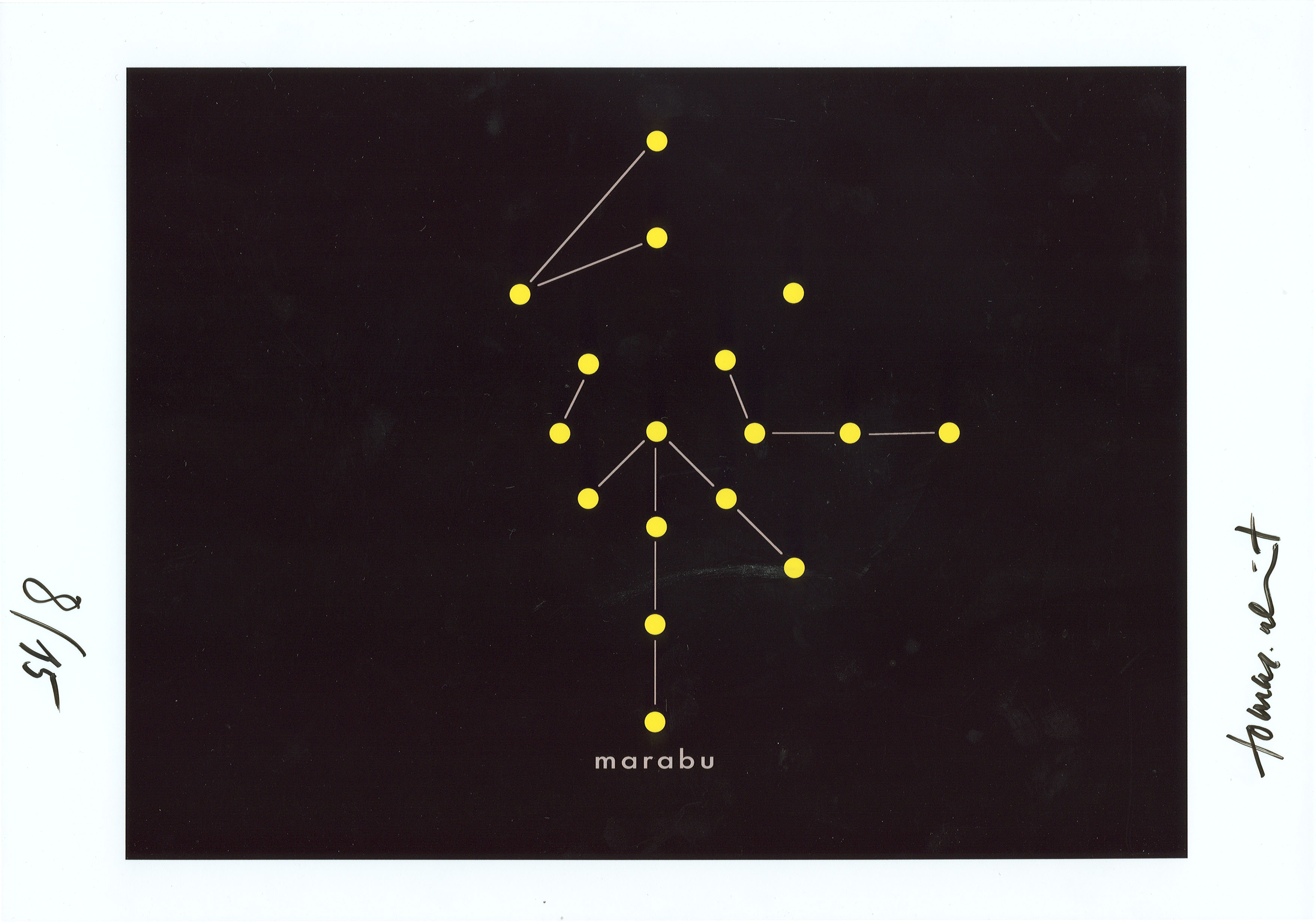Tomas Schmit
e-constellation, 2004
Artist
Tomas Schmit
Title
c-constellation
Year of creation
2004
Technology and duration
Film, 25 minutes with sound
Year of acquisition
2007
Acquisition of the foundation
Tomas Schmit, who came to Fluxus via Nam June Paik, is best known for his reduction and radical representation, which became his working principle. While Paik or Beuys slowly pushed the minimal and small in the Fluxus movement into the large and sublime, Schmit reduced more and more and broke away from Fluxus at the end of the 1960s to focus primarily on drawing. The graphic work - several thousand works - already shows the many different ideas that the creative word player was able to implement on paper. The importance of the word is evident - Tomas Schmit was not only an illustrator, but also a writer, so that word and image play together for him and usually only make sense together. His points of contact are also of a literary nature: Gertrude Stein and Franz Kafka interested him, philosophical topics concern him and the artistic reflection of scientific questions seems to be the foundation and main interest in his work, so that his works often address evolution, behavioral research and perception, as well at e-constellation.
New structures are constantly emerging from a few fixed points and connecting lines. It is reminiscent of a child's tile-laying game and becomes a kind of puzzle that is posed to the viewer. The writing remains an essential component of his work here too, the text usually solves the puzzle, the writing and images complement each other. Like mobiles, things are taken apart and put back together again, the individual is viewed depending on its surroundings and only makes sense in that way, so that the images are reminiscent of star constellations with lines - but are constantly changing. The former paper man Tomas Schmit turns to new media with this work, and although technically e-constellation is a film, in practice it is a sequence of images with crossfades, so that new mutations always arise in which the eye still retains the old, but the new is already coming.
